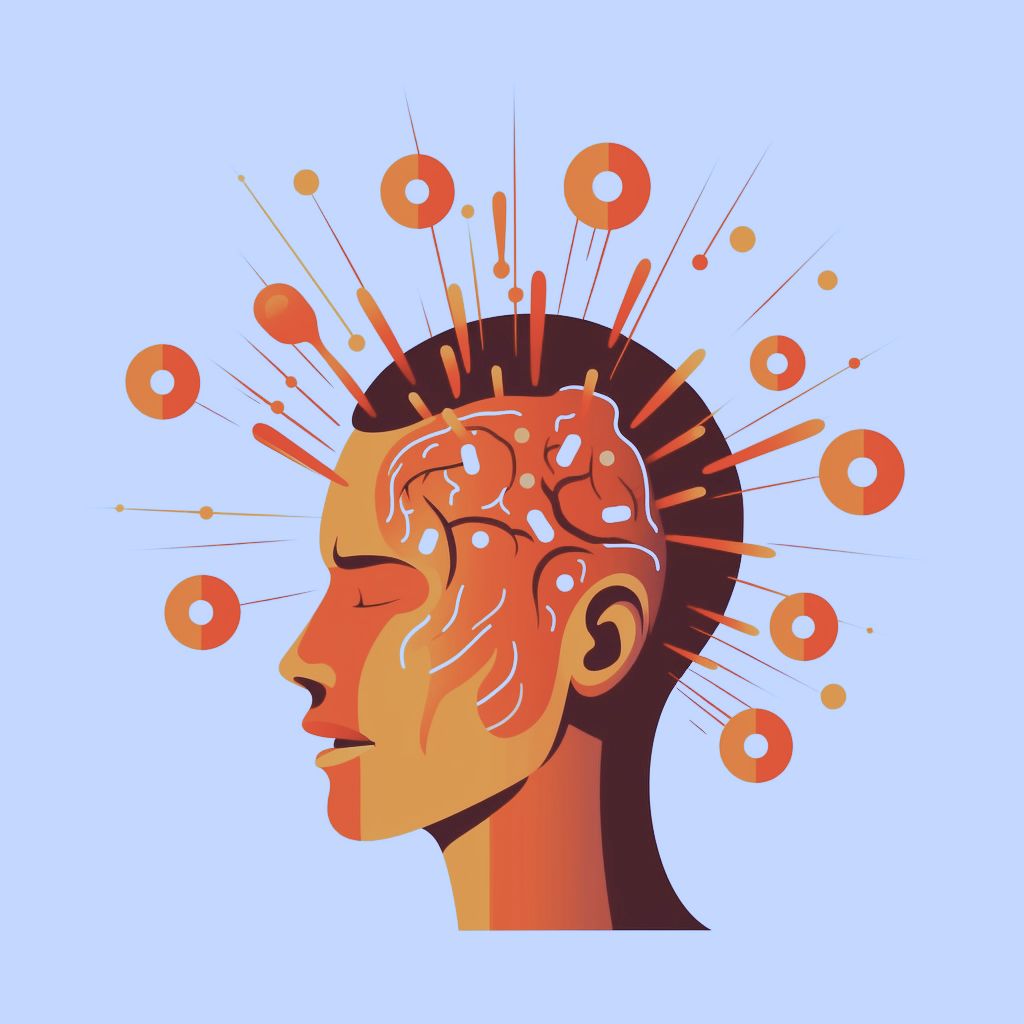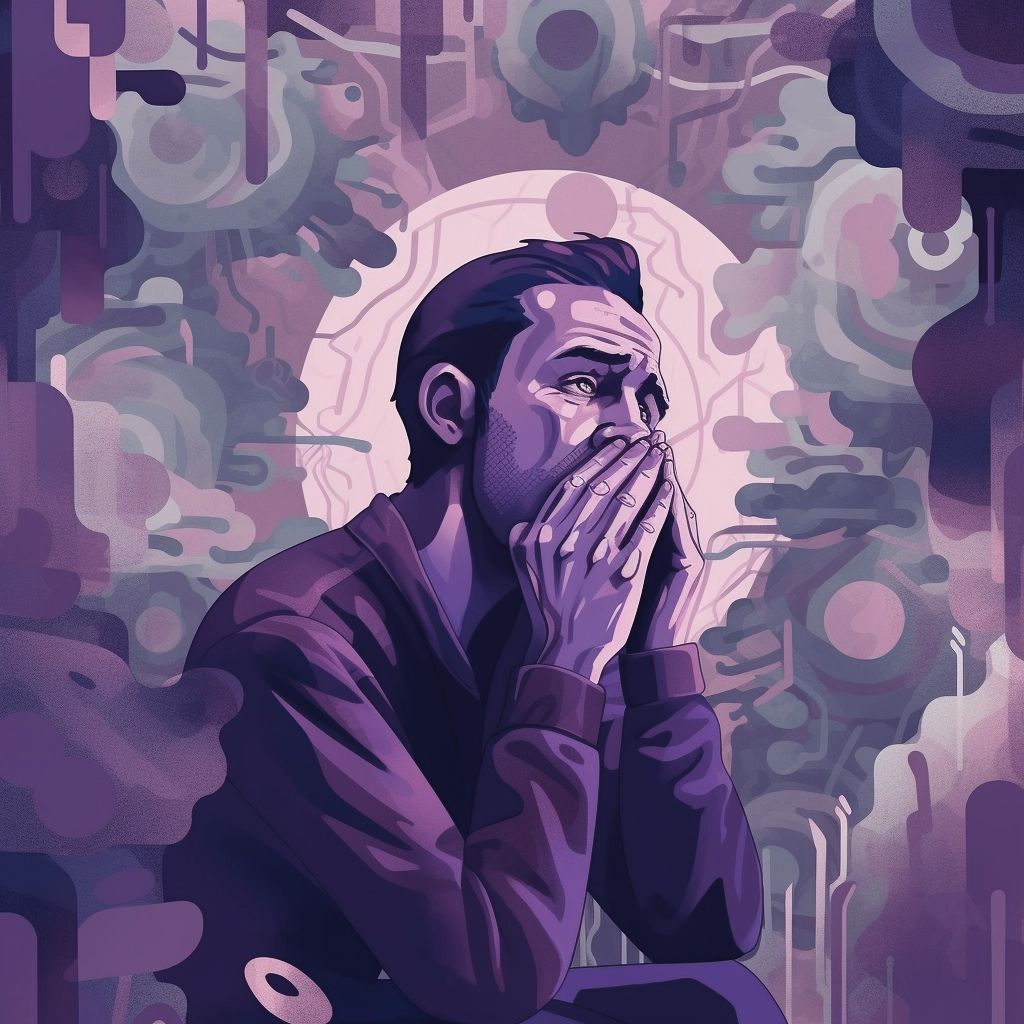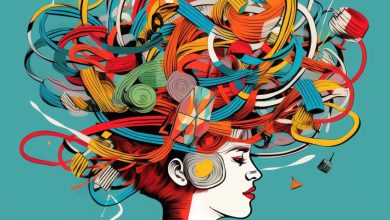Generalized Anxiety Disorder (GAD): Signs, Triggers, and Treatment Options

Generalized Anxiety Disorder (GAD), also known as excessive worry disorder, is a prevalent and impactful mental health condition affecting millions of individuals worldwide. It is characterized by persistent and uncontrollable anxiety and excessive worry about various aspects of life, often accompanied by physical symptoms such as restlessness, fatigue, and muscle tension (APA, 2013).
This article delves into the definition, prevalence, and impact of GAD on society, emphasizing the importance of raising awareness and understanding the disorder to promote early intervention and support for those affected.
What Does Generalized Anxiety Disorder Mean?
Generalized Anxiety Disorder is classified as an anxiety disorder under the Diagnostic and Statistical Manual of Mental Disorders (DSM-5) by the American Psychiatric Association (APA). According to the DSM-5, GAD is characterized by excessive anxiety and worry about a wide range of everyday situations and activities, occurring more days than not for at least six months (APA, 2013). The anxiety and worry are often difficult to control, leading to significant distress and impairment in daily functioning.

Individuals with GAD may experience a range of symptoms, including but not limited to irritability, difficulty concentrating, sleep disturbances, and physical symptoms such as trembling and headaches (APA, 2013).
| Also Read: What is Sleep Anxiety? | Heart Racing When Trying to Sleep
How Common Is Generalized Anxiety Disorder?
Generalized Anxiety Disorder is a prevalent mental health condition, affecting people of all ages, genders, and backgrounds. According to the World Health Organization (WHO), GAD is estimated to affect approximately 3.6% of the global population (WHO, 2021). It is worth noting that the actual prevalence might be higher, as many cases go undiagnosed due to stigma or lack of awareness.
The impact of GAD on individuals and society is substantial. For those living with GAD, constant worry and anxiety can lead to a diminished quality of life, impaired social functioning, and decreased productivity. Furthermore, individuals with GAD may be at higher risk of developing other mental health disorders, such as depression and substance use disorders (APA, 2013).
Generalized Anxiety Disorder Diagnosis
Generalized Anxiety Disorder or GAD diagnosis involves a careful assessment of symptoms and adherence to specific diagnostic criteria outlined in the Diagnostic and Statistical Manual of Mental Disorders (DSM-5). To be diagnosed with GAD, an individual must experience excessive anxiety and worry about various aspects of life for at least six months, with symptoms present on most days during this period (APA, 2013). Additionally, the anxiety and worry must be challenging to control and significantly impair daily functioning.

The symptoms of GAD encompass both cognitive and physical manifestations. Individuals with GAD often experience restlessness, irritability, difficulty concentrating, and muscle tension. They may also have sleep disturbances, including difficulty falling asleep or staying asleep (APA, 2013). These symptoms can cause considerable distress, leading to a reduced ability to handle everyday tasks and challenges.
GAD vs. Normal Anxiety
While experiencing some level of anxiety is a natural response to stressful situations, Generalized Anxiety Disorder represents a more persistent and excessive form of anxiety that goes beyond typical worry. The key distinction lies in the duration, intensity, and interference with daily life.
Normal anxiety tends to be situation-specific and usually dissipates once the stressor is removed or resolved. In contrast, individuals with GAD find it challenging to control their worry, and the anxiety persists even in the absence of an immediate stressor. The excessive nature of the anxiety can lead to persistent preoccupation with potential negative outcomes, even when there is little or no reason for concern (APA, 2013).
| Suggestion: What is the Difference Between Anxiety vs. ADHD in Adults?
How Does Generalized Anxiety Disorder Develop?
Generalized Anxiety Disorder does not have a single cause but rather results from a complex interplay of genetic, environmental, and psychological factors. Several risk factors increase the likelihood of developing GAD:

- Family History: Research suggests a genetic predisposition to anxiety disorders, including GAD. Individuals with a family history of anxiety or other mental health disorders may be at higher risk (Hettema, 2015).Trauma and Stress: Exposure to traumatic events or chronic stress can contribute to the development of GAD. Stressful life events, such as major life changes or ongoing stressors, can trigger or exacerbate anxiety symptoms (McLaughlin et al., 2015).Neurobiological Factors: Abnormalities in brain chemistry and function, specifically related to neurotransmitters like serotonin and gamma-aminobutyric acid (GABA), have been linked to GAD (Kendler et al., 2011).
The Role of Genetics and the Environment
Genetic factors play a significant role in the vulnerability to GAD. Twin and family studies have shown that individuals with a first-degree relative (e.g., parents or siblings) who have GAD are at increased risk of developing the disorder themselves (Hettema, 2015). However, genetics alone cannot account for GAD’s development, as environmental factors also contribute to its onset.
The environment in which a person grows up, and lives can shape their risk for GAD. Adverse childhood experiences, such as abuse or neglect, can increase vulnerability to anxiety disorders in adulthood (McLaughlin et al., 2015). Additionally, ongoing stressors and life challenges can interact with genetic predispositions, increasing the likelihood of developing GAD.
The Impact of Generalized Anxiety Disorder
Generalized Anxiety Disorder (GAD) can have a profound impact on individuals’ lives, affecting their psychological well-being, daily functioning, and overall quality of life.

Psychological Effects on Individuals
GAD often leads to a range of psychological symptoms that can significantly impact an individual’s mental health. Persistent worry and anxiety can cause emotional distress, leading to feelings of fear, unease, and a sense of impending doom. This emotional burden can lead to irritability, difficulty concentrating, and a heightened state of alertness (APA, 2013).
Impaired Daily Functioning and Quality of Life
The chronic nature of GAD and its associated symptoms can significantly impair daily functioning. Individuals with GAD may find it challenging to meet work or academic responsibilities, maintain relationships, and engage in leisure activities. Simple tasks can become overwhelming due to excessive worry and anxiety (APA, 2013).
Furthermore, GAD can impact social interactions and personal relationships. The constant fear of negative outcomes or rejection may lead individuals with GAD to withdraw from social situations, causing feelings of isolation and loneliness (Craske et al., 2017).
Unlock the Morning Mind:
Navigating Anxiety Upon Waking. 🌅
Dive deeper into this lesser-known aspect of anxiety as it intertwines with Generalized Anxiety Disorder.
Embark on a journey to understand, manage, and transform your mornings.
Your mornings await – seize serenity now!
Generalized Anxiety Disorder Treatments
Generalized Anxiety Disorder (GAD) can be effectively managed through various treatment approaches, ranging from evidence-based therapies to medication and complementary therapies.
Cognitive Behavioral Therapy (CBT)
- CBT challenges anxious thoughts, teaches coping strategies, and improves daily functioning.
- Highly effective, reduces anxiety symptoms, and lowers relapse rates (Hofmann et al., 2012).
Medication
- SSRIs and SNRIs regulate brain neurotransmitters to alleviate anxiety.
- Effective, but potential side effects and individual variability (Baldwin et al., 2014).
Alternative and Complementary Therapies
- Mindfulness practices promote present-moment awareness, breaking free from anxious thoughts.
- Mindfulness significantly reduces anxiety and improves overall well-being (Hofmann et al., 2010).
- Exercise and physical activity boost mood, reduce stress hormones, and ease anxiety.
- Exercise interventions show a significant reduction in anxiety symptoms (Asmundson et al., 2013; Stubbs et al., 2017).
- Art therapy for anxiety employs creative processes to express emotions, reduce stress, and enhance self-awareness. Through art, individuals find relief and healing, fostering a sense of calm and well-being.
Self-Help Strategies for Managing GAD
Here are some self-help strategies for managing GAD:

Lifestyle Changes
- Diet and Nutrition: A balanced diet with essential nutrients supports overall well-being and can reduce anxiety symptoms (Marx et al., 2017).
- Exercise and Sleep: Regular physical activity and adequate sleep promote relaxation and help manage anxiety (Asmundson et al., 2013).
| Read More: Nutrition and Anxiety: The Impact of Diet on Anxiety Disorder
Stress Management Techniques
- Breathing Exercises: Deep breathing calms the nervous system and reduces anxiety (Zaccaro et al., 2018).
- Relaxation Techniques: Mindfulness and progressive muscle relaxation help relieve stress and promote emotional well-being (Hofmann et al., 2010).
Support Systems
- Social Support and Relationships: Connecting with loved ones provides emotional support and reduces feelings of isolation (Taylor et al., 2011).
- Support Groups and Online Communities: Joining support groups offers understanding, shared experiences, and a sense of belonging (Bee et al., 2018).
GAD in Special Populations
GAD in Children and Adolescents
Generalized Anxiety Disorder (GAD) can manifest differently in children and adolescents compared to adults. Symptoms may include excessive worry about academic performance, social interactions, or family issues (APA, 2013). Early intervention through therapy and support is crucial to prevent long-term impact on mental health and functioning (Ginsburg et al., 2018).
GAD in Older Adults
GAD is not exclusive to younger populations; older adults can also experience anxiety. However, GAD in this age group is often underdiagnosed due to overlapping physical health issues and the belief that anxiety is a normal part of aging (Stanley et al., 2019). Proper assessment and tailored interventions are essential to address GAD effectively in older adults.
Also Might be Interesting…
HealWiser’s Last Piece of Advice
Generalized Anxiety Disorder (GAD) can have profound effects on individuals’ psychological well-being, daily functioning, and overall quality of life. If you or someone you know is experiencing symptoms of GAD, seeking help and support is essential. Remember that you are not alone, and GAD is a treatable condition. Early intervention and appropriate treatment can lead to improved outcomes and a better quality of life.
Remember, there is hope, and there is help available. Together, we can make strides in addressing GAD and improving the lives of millions of individuals around the world.
Share your experience with HealWiser and others in the comments section below this post.






